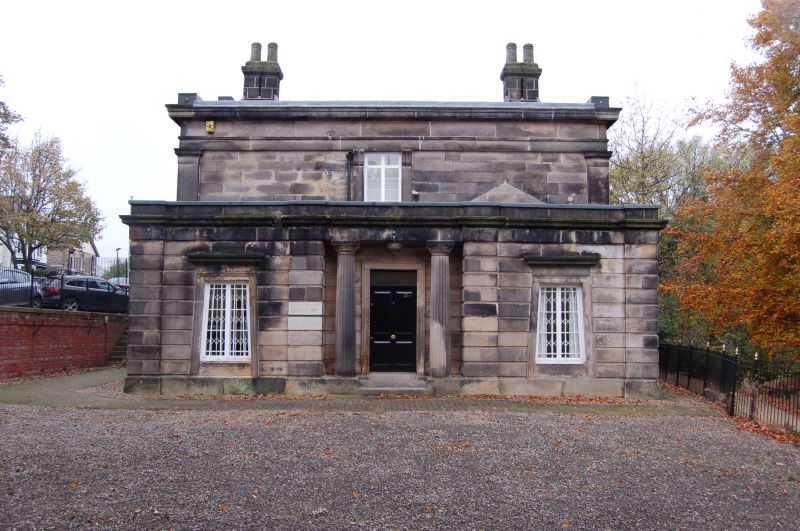The main pathway through the site passes in front of the Samuel Worth Chapel and curves up to the west towards the Cemetery Office (Grade II listed) and the southerly entrance. The square Office building has pairs of long, sloping, simply framed windows on each side, shaped like the doorways in Egyptian tombs. Classical style pillars stand on either side of the door.
The Cemetery Office
The Cemetery Office was used for administration purposes by the Sheffield General Cemetery Company and as living accommodation for Cemetery workers. It also had a stonemason’s yard adjacent to it.
Anyone buying a plot in the Cemetery was expected to place a memorial stone on it shortly after the interment. Purchasing a stone from the Cemetery Company was encouraged, as a fee had to be paid and permission obtained if a different stonemason was used. During the 19th century, land adjacent to the Office was used to showcase the range of memorials available from the Cemetery stonemasons. This area was known as the ‘Italian garden’ after the Italian marble on display. At the opening of the 20th century, when land for burial plots was in short supply, the garden was brought into use as burial space.

World War Two
During the Second World War, the Cemetery Office was made into a command centre for an Air Raid Precautions unit run by the Sexton and Head Groundsman who lived there. The building’s cellars were reinforced with timber beams and posts supposedly to resist the impact of bombing, although their usefulness was doubtful.
Saved from dereliction
The Cemetery Office was saved from dereliction in 1987 when a local firm of architects carefully restored the building for use as their own offices and renamed it Montague House. The building is in private ownership and is used as a children’s day nursery.



